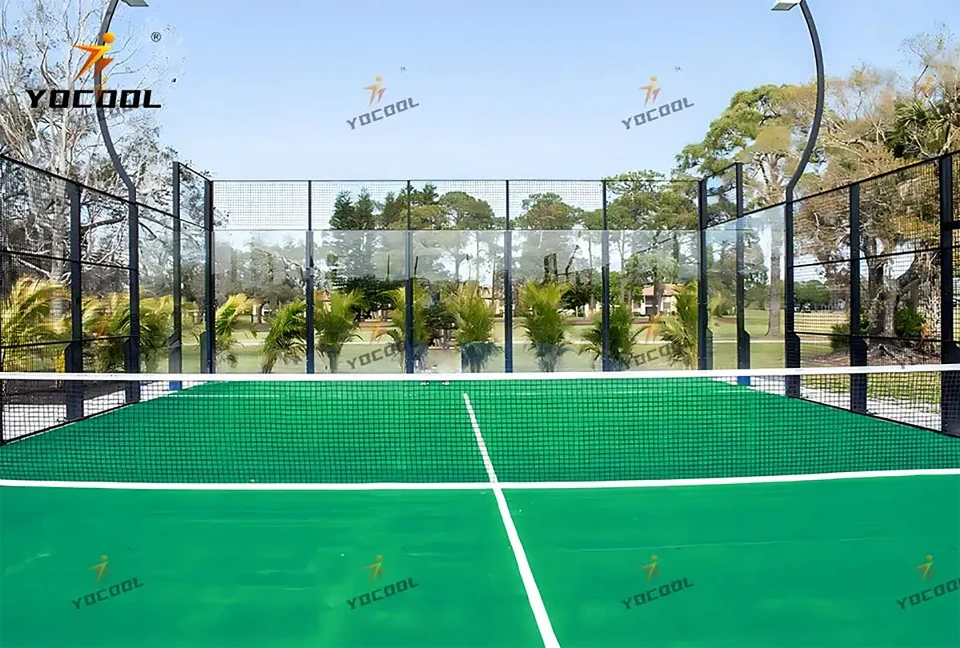

The Cost to Build a Padel Court Factory An Overview
As the popularity of padel tennis continues to soar globally, many entrepreneurs and investors are looking at the potential for establishing padel court factories. The rising demand for padel courts, driven by the sport's accessibility and appeal, creates an opportunity to tap into a burgeoning market. However, before diving into this venture, it is essential to understand the various costs associated with building a padel court factory.
Initial Investment
The initial investment required to establish a padel court factory can vary significantly based on several factors, including location, scale of production, and the quality of materials used. On average, the total cost for setting up a factory can range from $200,000 to $1 million. This estimation includes expenses related to land acquisition, construction, and the necessary equipment for manufacturing courts.
1. Land and Construction Costs The size of the factory will largely determine land acquisition costs. In densely populated areas, land prices can be exorbitant. On the other hand, choosing a suburban or rural location could mitigate some of these costs. Construction costs will also fluctuate based on local labor rates and material prices. A typical factory might require around 5,000 to 10,000 square feet of space to accommodate production and storage.
2. Equipment Purchase The machinery and equipment necessary for manufacturing padel courts can be significant expenses. This may include tools for constructing the court framework, flooring materials, fencing, and lighting systems. Depending on the level of automation desired and the production capacity, the cost of equipment can range from $100,000 to over $400,000.
Operational Costs
Once the factory is established, ongoing operational costs need to be considered. These include labor, utilities, maintenance, and raw materials.

1. Labor Costs Hiring skilled labor is crucial for maintaining quality assurance in court production. The labor cost will depend on the local wage rates and the number of employees required, which can range from 10 to 50 workers based on the production scale.
2. Material Costs The quality of materials used in the production of padel courts will directly impact the final product's durability and appeal. Common materials include synthetic grass, wood, steel for frames, and specialized lighting. Establishing relationships with reliable suppliers is essential to manage material costs effectively.
3. Utilities Monthly utility bills for electricity, water, and heating can add up, significantly impacting the factory's operational budget. It's essential to incorporate these costs into your financial model.
Marketing and Distribution
Another cost component that must not be overlooked is marketing and distribution. Establishing a brand presence through digital marketing, attending sports expos, and forming partnerships with sports facilities can be costly but necessary for acquiring customers. Distribution costs will also vary, especially if courts are shipped nationally or internationally.
Conclusion
Building a padel court factory can be a lucrative business opportunity amid the sport’s growing popularity. However, prospective investors must be diligent in calculating the comprehensive costs before embarking on this venture. From initial investment to ongoing operational costs, understanding the financial landscape will be crucial to the factory's long-term success. With careful planning and strategic decisions, the padel court production business can thrive in this exciting and expanding market.
Homogeneous Transparent Rubber Flooring Durable & Slip-Resistant
Homogeneous Transparent Rubber Flooring Durable & Slip-Resistant
Industrial Flooring for Paddle, Squash, Tennis Courts & Factories Durable Solutions
Durable & Slip-Resistant Rubber Floor Mats Heavy-Duty Protection
Industrial Flooring Solutions Durable & Custom-Made in China
Premium PVC & Rubber Sports Flooring Shock-Absorbing & Durable